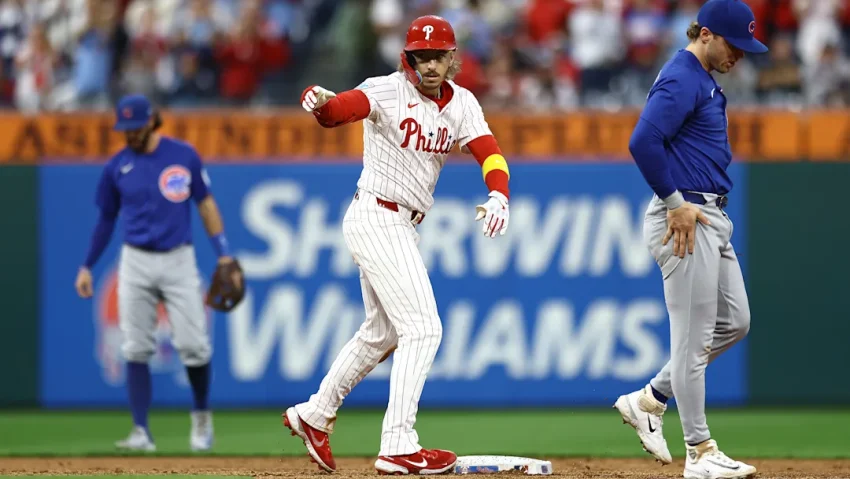Advanced stats and metrics have changed the way we look at baseball, and the Phillies’ young second baseman showed us just how good he is on the basepaths.

In the midst of major changes in how the game of baseball is played, from the introduction of the pitch clock to the introduction of the ghost runner on second base in extra innings. One thing has become essential to how baseball is not only watched but also analyzed by fans, players and managers alike.
In 2015, during gloomy times for the Philadelphia Phillies, the Statcast system was made official in all MLB ballparks, with cameras and radars set up across each park to track a multitude of stats and other metrics. Let’s say Bryce Harper crushes a home run to deep left center field. The distance and exit velocity, or how fast the ball was hit, is tracked instantly by this system so you know right away Harper hit a 450-foot bomb at 113 mph off the bat.
Bryson Stott was among the best in new Statcast basestealing metrics in 2024
Fast forward almost a decade later to 2024, and after advanced metrics, you can say, robbed the Tampa Bay Rays of a World Series back in 2020, one of the younger Phillies who’s part of the infamous “Daycare” has shown to know how to use his legs on the basepaths amongst the best of the league.
Now let’s be completely honest: No one in the league can steal bases and move along the base paths like Elly De La Cruz or the lone member of the 50/50 club, Shohei Ohtani, or Ronald Acuna Jr., who stole 70 bags in one season. But for second baseman Bryson Stott to be included amongst these names is a feat in itself.
On the leaderboard for Statcast’s basestealing leaders for the past season, other than the aforementioned names, Stott just creeps into the top 10 with +21 net bases gained, just above star Cleveland Guardians third baseman Jose Ramirez. Now, what exactly is net bases gained?
According to MLB.com, this metric is, “The difference between a player’s base advances vs. average and his outs created vs. average.”
Basically, this is measured by how many times a player successfully advances a base from stealing or balks or pitcher violations, compared to how many times the player is thrown out from these advances, and each of those is compared to the league average.
Another new metric is baserunning run value, which basically encompasses the “total baserunning impact of each player,” combining stolen bases and all of the extra bases a player takes into one metric.
When it comes to that, Stott makes his way up the leaderboard to sixth, beating out the likes of known speedsters Corbin Carroll of the Arizona Diamondbacks and Pete Crow-Armstrong of the Chicago Cubs. The top two here are, who else but Ohtani at one, and Milwaukee Brewers second baseman Brice Turang, who also had 50 stolen bases last season and got his own card in MLB 24 The Show.
Now, Stott does have a 99 overall card of his own, but we’re not talking about pixels on a screen. The young infielder out of Las Vegas can run his legs in real time to an impressive degree. And with additions being made to the roster for the upcoming 2025 season, everyone is going to need to move as fast and as efficiently as possible.
